“NASA has released satellite images of the new island formed off the coast of Pakistan following a powerful earthquake last week. The new outcropping off the shore of the Paddi Zirr near Gwadar has been captured by NASA’s Earth Observing-1 satellite. The island rose from the depths of the sea floor after the earthquake hit, it is estimated to be about 75 to 90 metres in diameter and 15 to 20 metres above the waterline. It is believed that a shallow pocket of pressurised gas was released during the earthquake, the gas rose to the surface, taking mud and rock with it. According to a group of people visiting the island, the sound of hissing gas was heard escaping from fissures even though there was no smell. The group found dead fish and other sea creatures on the surface of the island that had been carried up with the mud and clay. Experts believe that this will only be a temporary island and that once the gas has escaped the mud will collapse and re-settle. Storms and waves are likely to play a part in shortening the lifespan of the island by washing away the soft clay and sand. It is thought that islands such as these only last a few months before sinking below the water again”. – Neela Debnath via The Independent
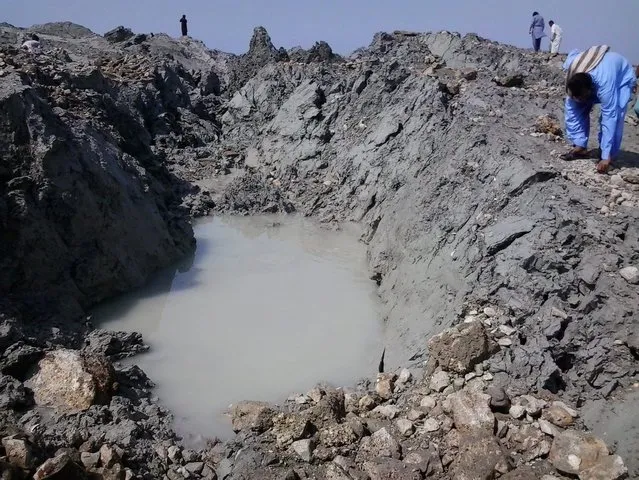
This photograph taken on September 25, 2013, shows Pakistani residents as they gather on an island that appeared some two kilometres off the coastline of Gwadar after an earthquake. A small island of mud and rock created by the huge earthquake that hit southwest Pakistan has fascinated locals but experts – who found methane gas rising from it – say it is unlikely to last long. The 7.7-magnitude quake struck on September 24, in Baluchistan's remote Awaran district, killing at least 271 people and affecting hundreds of thousands. (Photo by Behram Baloch/AFP Photo)
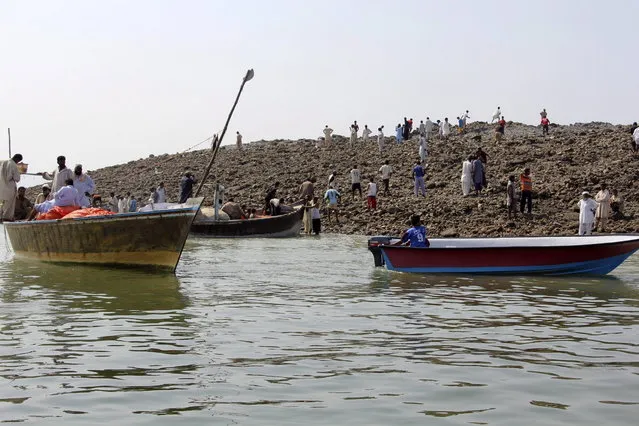
People use boats as they visit an island that rose from the sea following an earthquake, off Pakistan's Gwadar coastline in the Arabian Sea September 25, 2013. A major earthquake hit a remote part of western Pakistan on Tuesday, killing at least 45 people and prompting the new island to rise from the sea just off the country's southern coast. The earthquake was so powerful that it caused the seabed to rise and create a small, mountain-like island about 600 meters off Pakistan's Gwadar coastline. Television channels showed images of a stretch of rocky terrain rising above the sea level, with a crowd of bewildered people gathering on the shore to witness the rare phenomenon. (Photo by Reuters/Stringer)
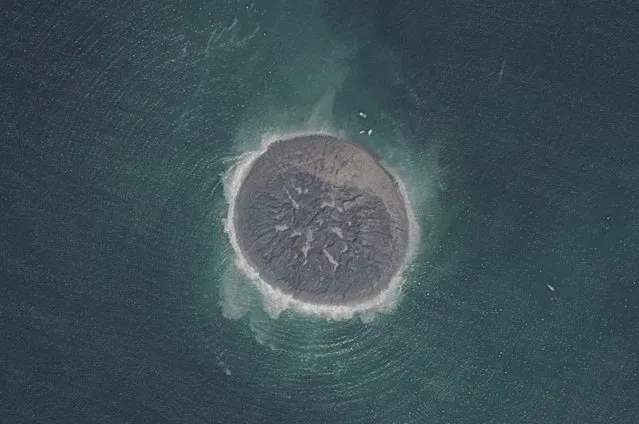
This handout picture taken by Pleiades satellite and released on September 27, 2013 shows a small island of mud and rock created by the huge earthquake that hit southwest Pakistan has fascinated locals but experts – who found methane gas rising from it – say it is unlikely to last long. The 7.7-magnitude quake struck on September 25 in Baluchistan's remote Awaran district, killing at least 271 people and affecting hundreds of thousands. The island is about 60 to 70 feet (18 to 21 metres) high, up to 300 feet wide and up to 120 feet long and sits about 650 feet from the coast. (Photo by AFP Photo/CNES/Distribution Astrium Services)
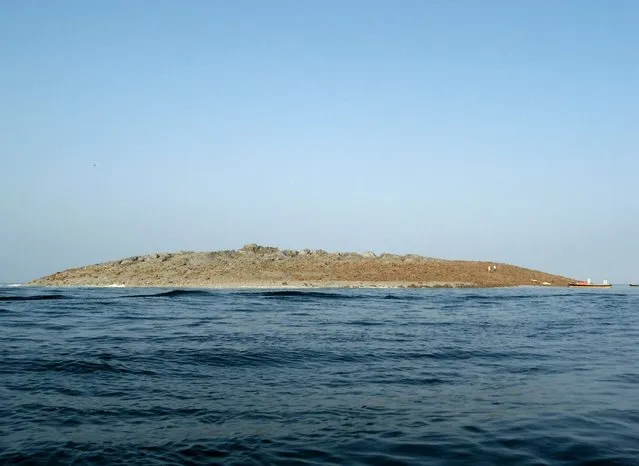
Pakistani residents arrive by boat to the island that appeared some two kilometres off the coastline at Gwadar, Pakistan after an earthquake. (Photo by AFP Images)
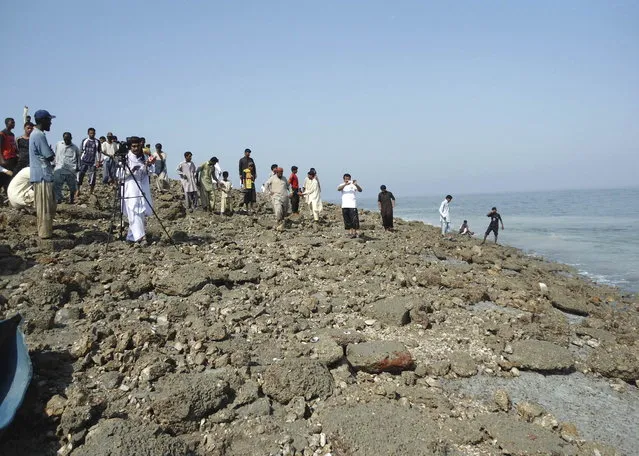
Members of the media and people walk on an island that rose from the sea following an earthquake off Pakistan's Gwadar coastline in the Arabian Sea September 25, 2013. A major earthquake hit a remote part of western Pakistan on Tuesday, killing at least 327 people and prompting the new island to rise from the sea just off the country's southern coast. The earthquake was so powerful that it caused the seabed to rise and create a small, mountain-like island about 600 meters off Pakistan's Gwadar coastline. Television channels showed images of a stretch of rocky terrain rising above the sea level, with a crowd of bewildered people gathering on the shore to witness the rare phenomenon. (Photo by Reuters/Stringer)
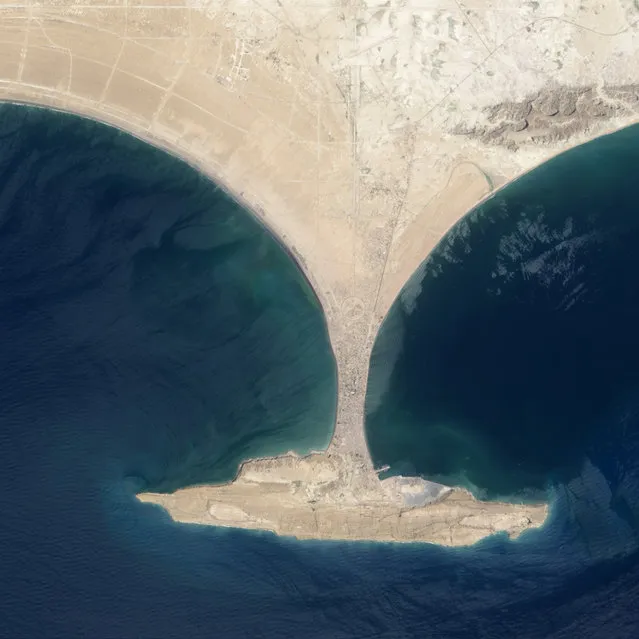
An image of the area before the earthquake struck and created the new island. (Photo by NASA)
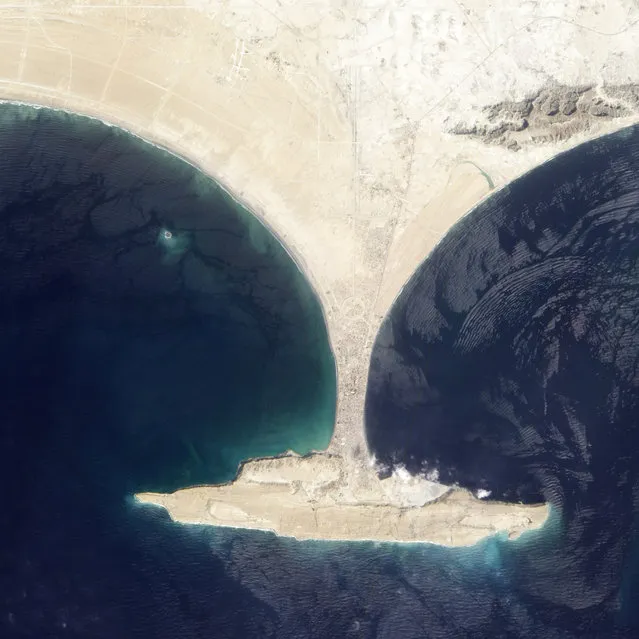
A satellite image from Nasa shows where the island is in relation to Pakistan. (Photo by NASA)
01 Oct 2013 08:23:00,
post received
0 comments
